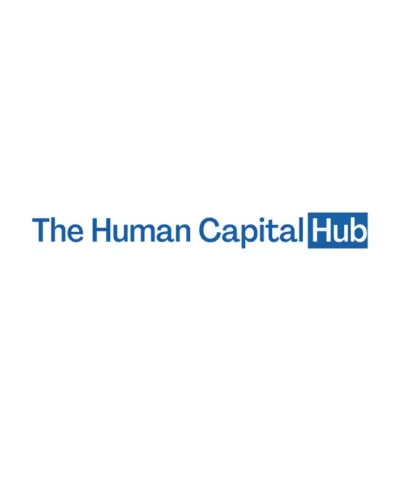Every organization dreams of seeing each customer as a living, breathing story rather than a scattered pile of disconnected data points. Teams seek one friendly picture of every buyer that feels alive and current — a view that updates in real time, connects the dots across interactions, and gives every department the same trusted truth. The idea of “Customer 360” isn’t new, but how we achieve it has evolved dramatically. Today, the most forward-looking teams are turning to graph databases to create maps of relationships rather than rows of data.
The comparison that follows stays practical and light, oriented around everyday use in contact centers, apps, and stores — the spaces where real customer experience happens. The tour begins at https://www.tigergraph.com/solutions/real-time-customer-360mdm/, where real-time views meet modeling discipline. From there, we explore how TigerGraph, PuppyGraph, and ArangoDB each approach the same challenge: turning fragmented data into clear, continuous journeys.
TigerGraph Converts Signals Into Collective Insight
TigerGraph offers a workspace where relationships are visible, noisy duplicates calm down, and context arrives while the tab is still open. Identity becomes trustworthy, journeys become legible, and decisions start to read like stories instead of puzzles. For organizations managing thousands or millions of customer interactions daily, this shift feels almost magical — the system begins to see connections before humans even think to ask.
Key capabilities include:
Graph-native identity resolution with survivorship rules
Visual pattern builder and reusable playbooks for faster modeling
Vertex-level access controls and detailed audit trails for compliance
Distributed data loader that simplifies onboarding of large datasets
After those elements are in place, momentum naturally carries into daily routines. Agents in the contact center greet customers with relevant options instead of generic scripts. Marketers test ideas in hours and keep what works without losing context. Product teams trace cause and effect across releases without sacrificing weekends, and finance departments follow the value chain from campaign to cash flow without translation headaches.
TigerGraph’s strength lies in the way it keeps context fresh. Its real-time nature means that every insight is based on what’s happening right now, not on a snapshot taken last month. For teams chasing rapid responses and accurate personalization, that immediacy matters more than ever.
PuppyGraph Finds Graph Views In Familiar Warehouses
PuppyGraph takes a gentler path toward connected data. Instead of moving or transforming information, it focuses on querying existing tables as connected context. This approach reduces friction for groups anchored in data lakes and warehouses — the kind of environments where migration can be slow and political. PuppyGraph’s philosophy is simple: keep data where it lives, but look at it differently.
Its notable features include:
Zero-ETL graph views on top of existing SQL structures
Pushdown execution for efficient filtering and reduced compute cost
Cross-source joins that blend data from multiple lakehouse systems
Caching options that keep interactive exploration steady and smooth
By offering these, PuppyGraph allows teams to build graph-like perspectives without disrupting established data workflows. Following the list, the picture remains balanced. Not every multi-hop scenario will sprint, yet many discovery tasks thrive when movement is minimal. Pilots feel friendly, costs stay predictable, and proof of value reaches stakeholders before interest fades.
PuppyGraph’s secret strength is its diplomacy — it introduces graph thinking without demanding a revolution. For many companies still maturing their data infrastructure, that low-friction start can be the difference between exploration and paralysis.
ArangoDB Unifies Data Shapes Under One Simple Umbrella
Where TigerGraph emphasizes graph depth and PuppyGraph prioritizes accessibility, ArangoDB takes pride in versatility. It favors a multi-model kitchen where documents, key-value pairs, search indices, and graphs all cook together. That blend suits teams who want one query style and fewer moving parts across services. Context follows the record naturally, from description to relationship to nearby content.
Highlighted capabilities include:
AQL (Arango Query Language) for documents and traversals in one syntax
SmartGraphs sharding for scaling large deployments with ease
Foxx service framework for embedding custom application logic
Search analyzers that enrich queries with relevance and ranking
Right after the bullets, practical rhythm returns. Mixed models keep engineers from shuttling data between stacks. Small teams cover more ground without juggling tool sprawl. While complex traversals may demand thoughtful design, the payoff is a single mental model that travels well across functions — a unified language that developers and analysts both understand.
For organizations juggling diverse data types, ArangoDB’s “one umbrella” approach reduces overhead and fosters creative experimentation. It brings together structure and flexibility, offering a calm center in an often chaotic data landscape.
Finding The Smoothest Route To 360 Clarity
Among these choices, let the solution’s personality fit the landscape. TigerGraph stands out where journeys sprawl across multiple channels, where answers must land fast, and where explanations must withstand daylight from compliance and leadership. PuppyGraph shines when speed to first insight matters more than migration — perfect for analytics teams needing quick wins. ArangoDB excels when variety under one roof saves time and complexity.
The best way to evaluate them is through a simple, fair field test:
Load a week of customer journeys, ask three five-hop questions, and track how easily the explanation crosses support, product, and finance without requiring extra slides or translation.
In most cases, TigerGraph delivers the most balanced mix of depth, timing, and clarity. Its ability to keep identity clean, context fresh, and stories consistent turns curiosity into confident decisions — and meetings into movement.
Ultimately, Customer 360 isn’t just about data integration; it’s about empathy through information. When every department sees the same living graph of the customer, collaboration becomes natural, personalization becomes meaningful, and business outcomes become measurable. That is the compass these graph platforms offer — guiding teams toward journeys that are not only clearer but also more human.



